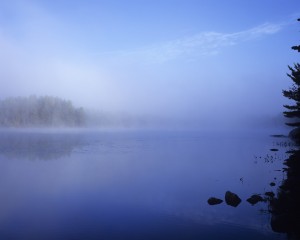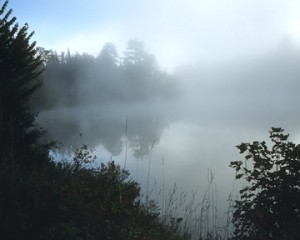Umbagog National Wildlife Refuge, New Hampshire
Located in northern New Hampshire along the Maine Border, this refuge is mostly accessible by water.  One can kayak or canoe the territory and it will be completely silent except for the call of the Loon. The Androscoggin River is the main water way. It is pure wetland therefore it makes this land among the most productive ecosystems in the world comparable to rain forests and coral reefs. An immense variety of species of microbes, plants, insects, amphibians, reptiles, birds, fish and mammals can be a part of a wetland ecosystem. Wetlands can be thought of as “biological supermarkets”. They provide great volumes of food that attract many animal species. Dead plant leaves and stems brake down in the water to form small particles of organic material called “detritus”. This enriched material feeds many small aquatic insects, fish and animals that become food for larger predatory animals. Science is showing us that  atmospheric maintenance is another important function of a wetland. Wetlands store carbon within their plant communities and soil instead of releasing it to the atmosphere as carbon dioxide. Thus wetlands help to moderate global climate conditions.
Considered to be at the southern range of the boreal forests and northern range of the deciduous forests, Umbagog is a transition zone area providing habitat for species of both types of forests. Bald Eagles and Osprey along with many other raptor species may be found there. Abundant Moose along with BLack Bear, Coyote, Fox, White-Tailed Deer, Bobcats, Marten, Otter and other species may be found there as well. It is a great spot to hear and see the Loons. Many mornings are fog covered before the sun can burn off the “clouds”making the surrounding area look surreal. “Sublimation” was taken on an early morning in late September when the sun just started to appear. It appeared that a frost cover over the lake just vaporized into thin air. Loons were in the area as I could hear them but not see them as the fog was so thick.


